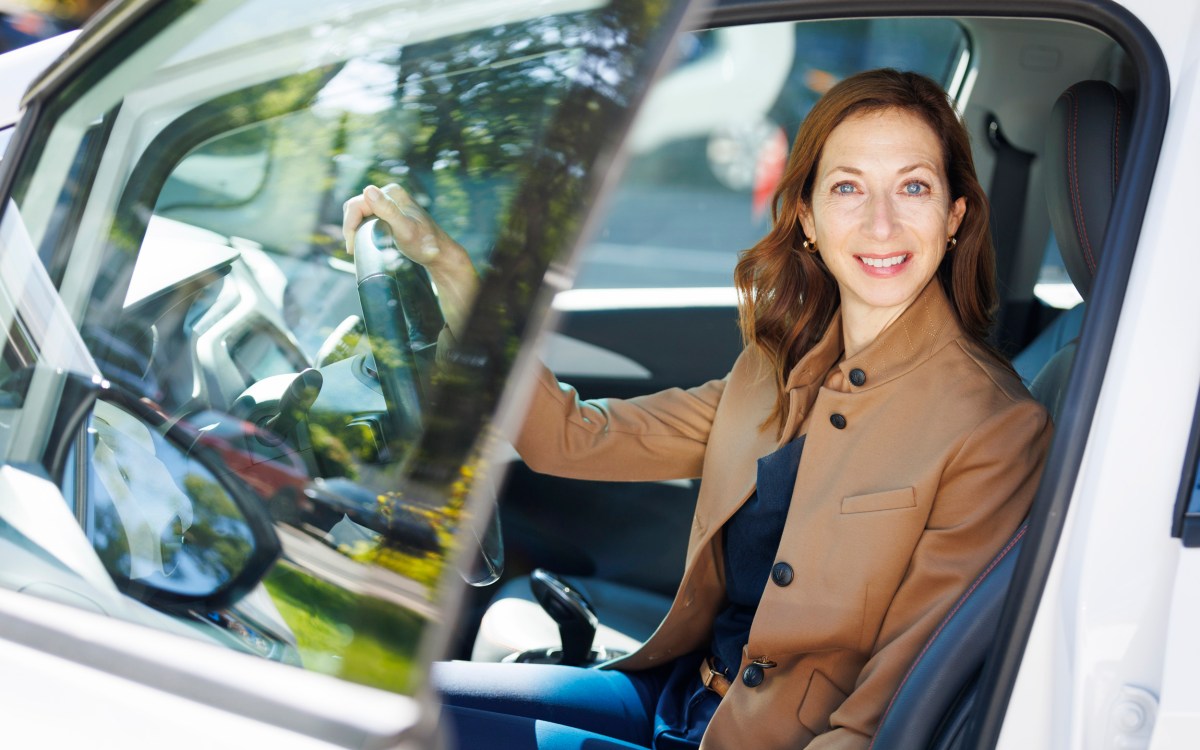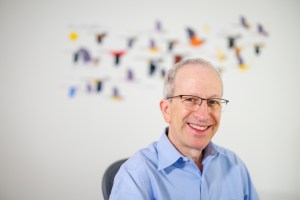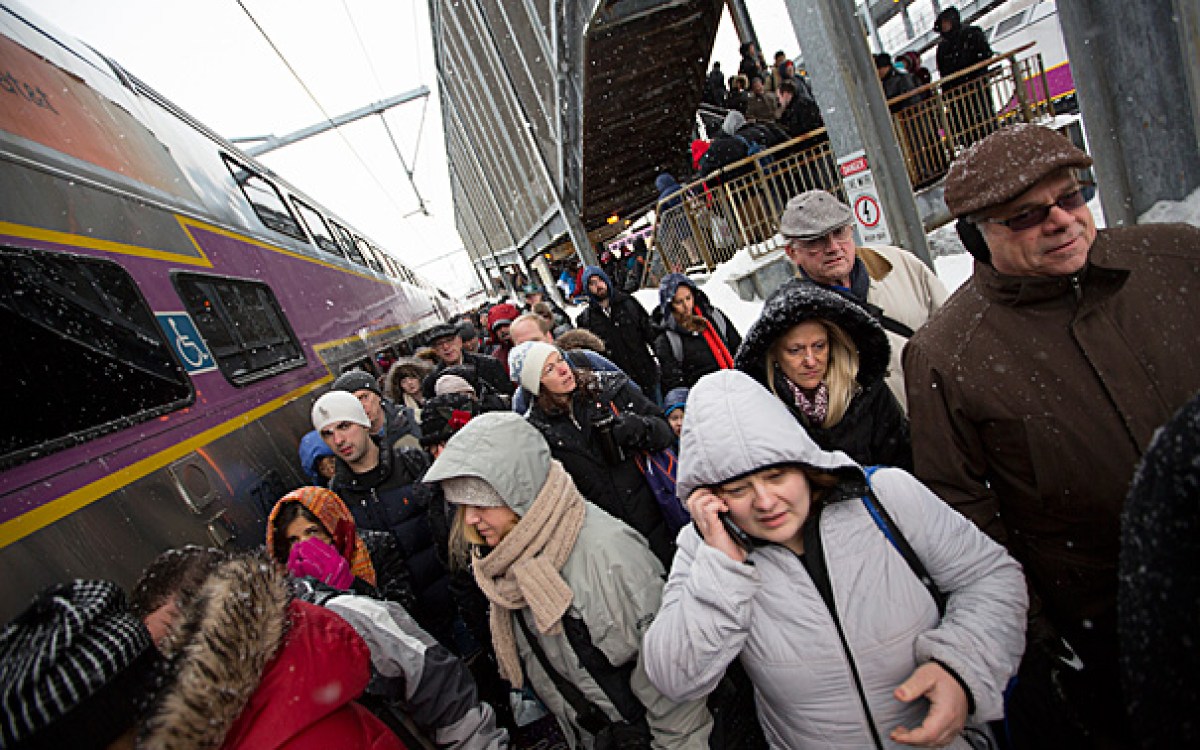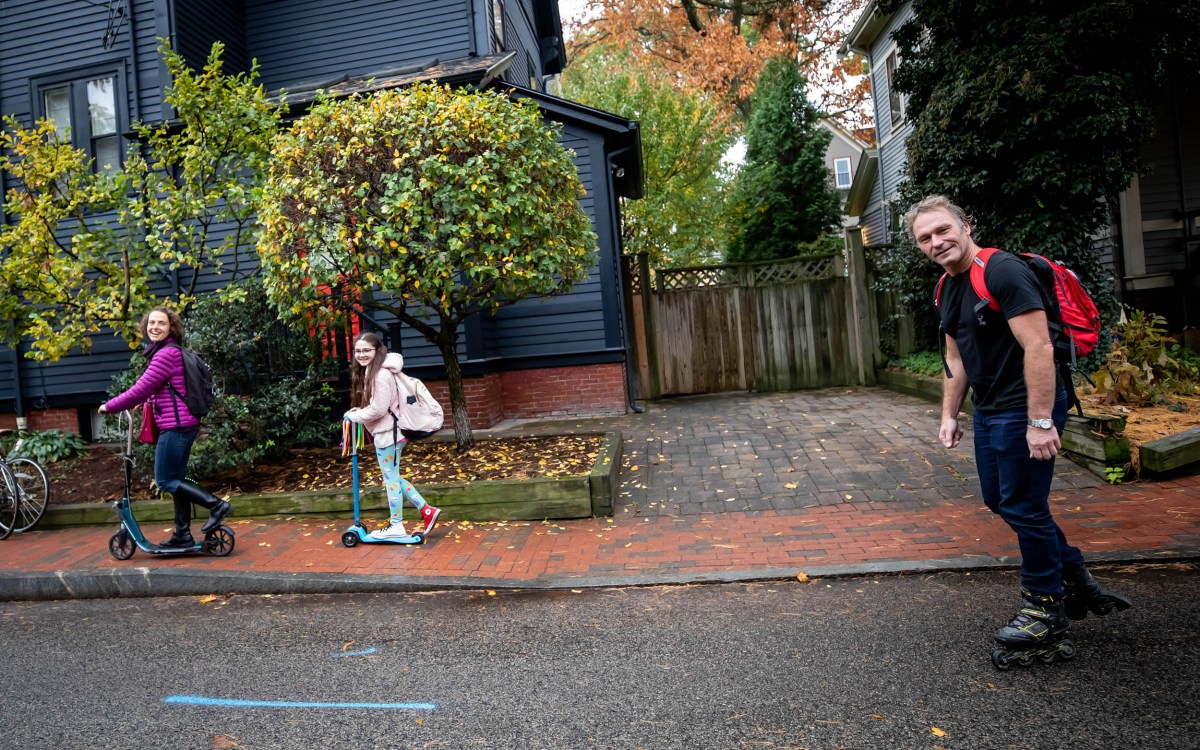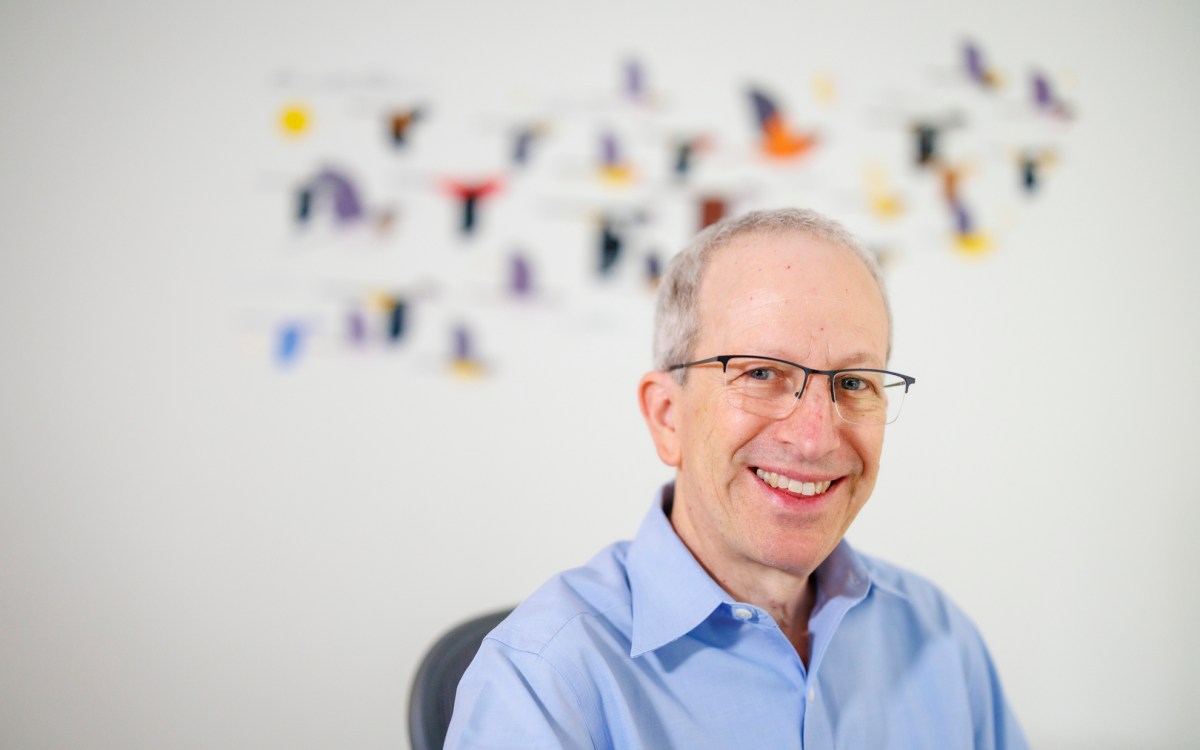
Photos by Kris Snibbe/Harvard Staff Photographer
Driving is more expensive than you think
Kennedy School study puts annual Mass. costs at $64 billion, hopes figure will be used as a comparison in mass-transit spending decisions
If you think the cost of driving is borne only by individuals who own cars, you may want to think again.
And you might be surprised just how pricey it is.
A team of graduate students at the Harvard Kennedy School estimate that the annual price tag for maintaining Massachusetts’ car economy is roughly $64.1 billion, with more than half of that coming from public funds. While they didn’t perform an analysis for all the states, the group notes that the cost structure would be similar.
“This is a huge number,” said the paper’s lead author, Stevie Olson, M.P.P. ’20. “It’s unexpected because the majority of drivers, citizens, consumers experience roads for free. You just drive out your parking lot, your driveway, and you’re on the road. No one’s charging you, but there’s all of these costs that are both public costs, indirect externalities that are also costs, and then private costs that people are incurring.”
The paper, which the students wrote as part of an applied lab course, found that costs are diffused across a number of areas and involve things people don’t often consider. Beyond those for individual drivers, road maintenance, snow removal, and policing, there are less-obvious ones, such as those associated with added pollution, value of land set aside for parking lots, lost productivity from sitting in traffic, and various costs associated with injuries and deaths on the road.
Using publicly available data, the authors put the annual public tab at $35.7 billion, which amounts to about $14,000 for every household in the state. Those that do own vehicles pony up an additional $12,000 on average in direct costs.
The authors say their goal is to demonstrate the total costs of driving so that information can be used for comparison when held up against other types of transit investments, like bus, subway, and train systems.
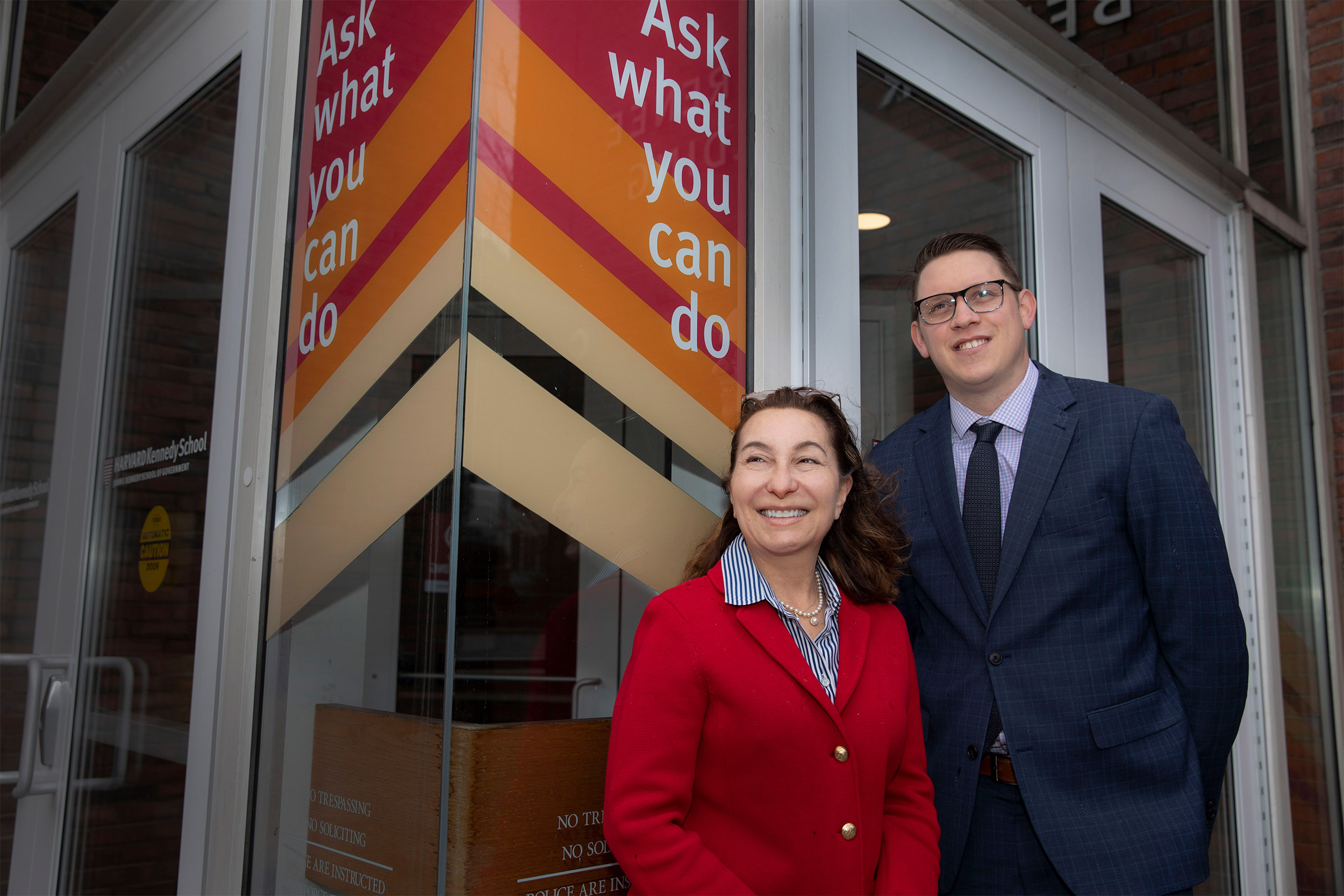
“If you think about it as an equation, this is a variable that has not been in the conversation, and it’s something that should we be considering as we think about what is the best way to provide transportation options to the public,” said Linda Bilmes, the Daniel Patrick Moynihan Senior Lecturer in Public Policy at the Kennedy School.
“We’re not trying to say that cars are bad or that we don’t need roads,” said Bilmes, who oversaw the study. “We’re just trying to say that if we think about the overall cost/benefit analyses around transportation when it comes to this conversation, not only is there a cost to the vehicle economy, but the cost is actually larger than we may have realized.”
For example, “When we think about the cost of investing in public transportation, we tend to think about it as if the alternative is free, as if we are spending several billion on the North-South Rail Link [a project connecting the Massachusetts’s largest railroad stations] as opposed to not spending any money,” Bilmes added.
The study was written as part of Bilmes’ “Greater Boston Applied Field Lab,” which provides students experiential learning opportunities working with state and local government. The lab takes on external clients who pose real-world questions relating to finance and operations. Massachusetts Rep. Seth Moulton ’01, M.P.A./M.B.A. ’11, suggested the study and helped connect the graduate students to officials in his district.
“I asked for this study because we lead the country in bad traffic, and the best solution to that problem is building a reliable, regional, electrified rail system,” Moulton said in an email. “But, a lot of people point to the cost of a rail system as the excuse not to do it. They advocate for wider roads and other short-sighted fixes, but the truth is we pay massive amounts to subsidize car travel and don’t even know it. Professor Bilmes and her students finally put a price tag on driving.”
In the paper, the students broke down the total costs into three buckets: direct budgetary costs, indirect social and economic costs (which include many of the more intangible costs), and private costs. The first two buckets make up the $35.7 billion the public pays and the third bucket is the additional $28.4 billion car owners foot. It accounts for driver expenses like gas, regular maintenance and repair, depreciation, and financing.
To get these figures students worked with the mayor’s office from the city of Lynn to average what the city spends on roads over five years. They then used that data to estimate what the state’s other 351 municipalities spend. The team also went through the overall state budget and those of various agencies like the Department of Conservation and Recreation to calculate all the money going to roads. Students also spoke to a number of scholars and experts in the vehicle economy to determine the most reliable statistics to use in their calculating model for figures not in the budgets they looked at.
The authors, some of whom have graduated, hope their model will be recreated in other states.
“While the $64 billion cost applies to Massachusetts, the costs of the vehicle economy are similar across states,” Olson said. “The price tag for this infrastructure is big in every state, and you can imagine collectively as a nation that the total is huge. We can use the study to think about urban travel, such as in a metropolitan area, but we can also use it to start thinking about interstate travel. The study illuminates tradeoffs that we make when investing in transportation infrastructure, and, rather than think of roads as free, we need to realize that significant resources go into the operation of the motor vehicle economy.”
“We need leaders in our state who look beyond the cars in front of us to make smart decisions about our transportation future,” Moulton said. “This study will help us do it.”
The Greater Boston Applied Field Lab (MLD-412) operates with support from the Rappaport Institute for Greater Boston, a University-wide entity housed at the Harvard Kennedy School that was founded and funded by the Phyllis and Jerome Lyle Rappaport Charitable Foundation.
